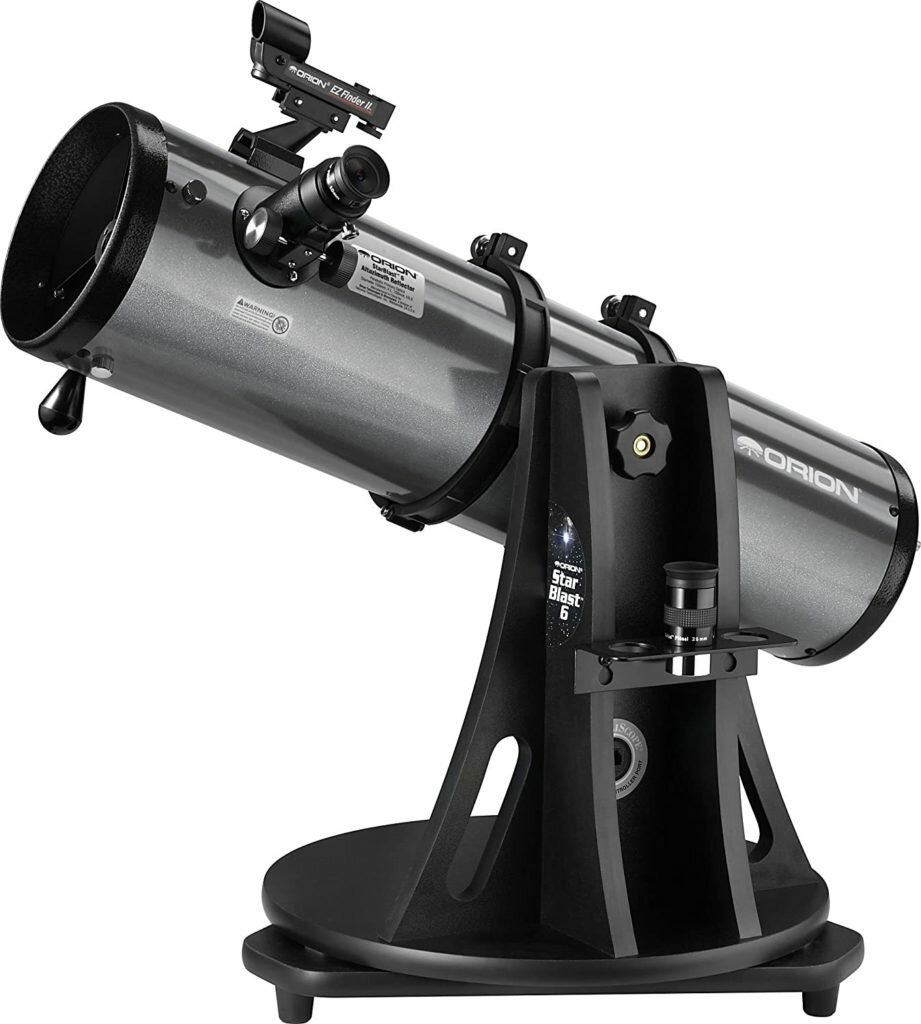Which is the best telescope to see galaxies with?
Buying a telescope is a large investment, and there are a number of details to consider before handing over your cash and making a contract with a salesperson. We produced a list of elements that are essential for a good telescope after carefully evaluating the best telescope to see galaxies and those that do not empty your pocket.
There are specific instructions about all of the issues you should think about prior to buying a telescope to view galaxies. Simply read it and you'll be ready to go out and get a high-quality telescope!
Reflecting and refracting telescopes can both be tuned to create high-quality views of distant objects. The refracting telescope, which uses much older technology, is great for seeing planets and other objects that revolve around our sun. Because the reflecting telescope uses much newer technology, it's probably ideal to look at neighbouring galaxies, nebulae and comets.
Orion 10016 StarBlast 6 Astro


For intermediate to advanced astronomers, the StarBlast 6 Astro Reflector telescope is ideal. Its huge aperture of 150mm allows it to absorb a minimum of 35% more light than the other telescopes on this list. This results in photographs that are brighter and crisper, with more details.
This is a reflector telescope with a benefit for observing deep-sky objects such as galaxies, star clusters and nebulas. It could also be used to study our own solar system's moons and planets. The primary mirror is parabolic, which avoids spherical aberrations. The main lens boasts a focal length of 750 mm and a focal ratio of f/5, giving this telescope a large field of vision, making it ideal for deep space photography.
The telescope has an alt-azimuth, which allows for vertical and horizontal movement in all directions. It's a telescope for the tabletop. That is to say, it does not include a tripod. It must be placed on a level surface, such as a table. The telescope seems to be too heavy to handle by hand, but it is compact enough to carry in your trunk.
OTA dust cover/cap, Optical tube assembly, Dobsonian type alt-azimuth mount, and 2 optical tube rings are included with the telescope. Also included are EZ Finder II reflex sight, starry night software, Collimation cap, Hex key Allen wrench (size 3/16′′), 3-Hole eyepiece rack and user manual.
PROS
- A wide field of view
- Large aperture
- Fairly simple to use
- Eyepiece holder
- Mirror with parabola
- No difficulty assembling
- Excellent for photographing deep space
CONS
- A little pricey
- Heavy
- Constant collimation needed
The best telescope to see galaxies with - Gskyer AZ90600 Telescope


Another top-rated telescopes for beginning and intermediate telescope users is the Gskyer AZ90600. Its 600 mm focal length provides a wide field of view, which is ideal for deep sky astronomy. The aperture of 90mm is sufficient for displaying bright and crisp images.
The optical tube is composed of aluminium, making it both strong and light. Internal parts are covered with anti-reflection blue film, which eliminates distortion and delivers crisp images. To safeguard your eyes, the optical lenses are entirely covered.
Three eyepieces (25mm, 10mm, and 5mm), a tripod, 630 Finderscope, 3x Barlow lens and 48 erecting prism are included. As previously stated, the Barlow lens magnifies the eyepieces by three times. The erecting prism ensures that the images are right side up for optimal viewing.
PROS
- Sturdy construction
- Wide field of view
- Simple to put together
- Components with anti-reflection blue film coating
- Barlow lens (3x)
- Excellent for beginners and intermediate users
CONS
- A little pricey
- There is no software provided
Celestron - NexStar 127SLT


We've been discussing telescopes that are primarily for beginners up until now. We've made it to the big leagues. The Celestron NexStar 12SLT telescope is a powerful telescope for intermediate astronomers.
It has a 127mm aperture and a Maksutov Cassegrain optical design, making it a great choice for seeing binary planetary systems and celestial photography. The large aperture enables for a more detailed and clear picture of our solar system's planets and moons. It features a sealed tube design that produces high-quality photos.
The telescope locates your items for you using a large database and an intelligent monitoring mechanism. The company's Sky Align technology enables navigating through celestial bodies a breeze. It includes a device known as the Sky Tour. A fantastic tool for newbies. Based on the time and location, it automatically provides a list of visible objects.
It includes a tripod, two eyepieces (25mm and 9mm), a Star Pointer Finderscope, and the SkyX planetarium software on a CD.
PROS
- Convenience of use
- Simple to put together
- Excellent optics
- Ideal for astronomical photography
- Automatic tagging and location
- The Sky Tour device has over 40,000 objects in its database
- Excellent construction quality
- A long focal length allows for a better view of the planets
CONS
- A little pricey
- Narrow Field of View
- Heavy